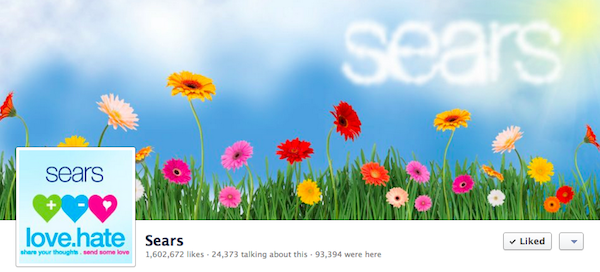Register by Jan 13 to save on passes and connect with marketers from Uber, Bose and more

The big idea is the cornerstone of advertising. Maybe it’s time to rethink that in the age of social, according to Ian Gomar, CMO of sporting goods, fitness & toys at Sears Holdings.
“I grew up with the 30-second commercial,” Gomar said in a Sprinklr Webinar. “So marketing was about the big idea and how do we take that big idea and make a 30-second commercial out of it? Today, it is the total opposite. Everything starts with small ideas that start in a social community and then developing the big idea from the small ideas. First, you develop digitally, and the last thing you do is the 30-second commercial.”
The difference between now and the pre-Internet days is that there are so many more channels and platforms. Gomar said that multichannel is the way to go, especially from a retail perspective. Retailers need to think about ways of being wherever consumers are, both from a marketing and a commerce perspective. When Sears began to analyze this paradigm shift a few years ago, it realized quickly that marketing is changing. It is changing from the traditional push of products through spray-and-pray approaches and moving toward the reinforcement of a brand through marketing.
“Think about whether all of your marketing efforts [both traditional and digital] are working together to reinforce your brand and give consumers the opportunity to engage and ultimately purchase from you,” Gomar said. “Content is a quicker way to a profitable sale.”
But the question is: what kind of content? Content takes all different shapes and forms nowadays. There are videos, pictures, press releases, blog entries, you name it. Gomar said the key is helping people and adding value, regardless of the form. For example, he posited, wouldn’t it be neat if Godiva partnered up with a retailer and gave the retailer’s Facebook connections the option of sending Godiva chocolates to loved ones? Godiva fills a need for consumers, and those consumers will tweet about it and tell their friends on Facebook. And the recipients of the chocolate will talk about how good or bad it is. Another hypothetical example Gomar gave was for a vitamin retailer like GNC to come up with a way for consumers to manage their vitamin intake. They can get a reminder when they are running low, so they can buy more.
“It’s about solution-based content; it’s habitual,” Gomar said. “If you are just focusing on the transaction, it is a short sale. You need to make the transaction habitual. Create a gravitational pull. Make people habitually come back to your site or Facebook page. Be a voice, but don’t try to control the community.”
Content is important, but data is more important to Gomar. Sears does a lot in terms of data mining to figure out its customers. Taking all the data and putting it into usable forms is a challenge for everyone right now. But Sears seems to have it all figured out. Using data from social media, Sears was able to segment its social database into 37 targeted lists. Some are people who spend a lot, those who spend most often and those who spend only sometimes but have the potential to spend more. These lists allow for more targeted marketing.
Metrics are an issue in social media as well, Gomar said. CMOs are at a bridge right now, where they need to understand and set new metrics for social media and then figure out how to translate it back to the business, where there are still a whole lot of traditional metrics.
“I don’t look at impressions,” Gomar said. “I look at engagement. That is the yard stick. I look at the marketing funnel and changes over time. So, is consideration going up because of our social efforts? It is about level of engagement and the return on engagement.”
Other metrics that Sears is using in the social space include things like whether social participants spend more than others. Sears has found that people who are really taking part in the conversations on its social media channels are spending more, more often, and they are advocating more as well.
“This is a part of the digital revolution,” Gomar said. “People who are social are likely better customers. And while some people like to share, other people are not as overt about it, but both could be very good customers.”
More in Marketing

‘The year where the dust settles’: Digiday editors share 2026 predictions
Between generative AI pilot projects and emerging agency hold co models, 2026 will be the year that signals turn into strategy.

Virality is no longer just a vibe at MrBeast’s Beast Industries
MrBeast is hiring a head of viral marketing. Marketers would be wise to pay attention.

‘This is what the future will look like’: Accenture Song has moved upstream of advertising
Accenture Song has outgrown the agency business without becoming an agency.





